Freezing Waves in Time!


It was the shot heard across Canada. There were a lot of factors that made Kawhi’s buzzer beating basket so remarkable. Aside from there being no time left on the clock and the weight of a sport’s nation on his shoulders, Kawhi had to overcome the backward momentum that is inherent in a ‘fadeaway’. The purpose of a fadeway is to create space between the shooter and defender(s), which was a necessity for Kawhi as there were several seriously tall 76ers trying to screen his shot.
Over-coming the fadeway’s backwards momentum is no easy feat as it requires players to quickly calibrate in their minds the additional force that is required to successfully sink a basket, which for most mere mortals is not intuitive. The shot is so challenging that only a handful of NBA basketball players have been able to reliably make this shot; and we’re talking the great players such as Michael Jordan, Lebron James, Kobe Bryant and of course Kawhi Leonard.
The video below provides an extreme example of backwards momentum with a soccer ball shot from the back of a truck
Investigating Kawhi Leonard’s shot in the lab
In addition to backwards momentum there were many additional physical factors at play such as the angle of the shot and gravity. Investigating all these forces in a single activity would not be practical. Fortunately most of these forces can be isolated and explored in the lab using PASCO sensors, software and/or equipment.
Exploring The fadeaway’s negative momentum using PASCO
PASCO offers an intriguing and affordable solution to model the dramatic effect of a fadeaway’s negative momentum on projectile distance. PASCO’s mini launcher will consistently launch projectile balls the same horizontal distance for a set angle, assuming that the launcher is stationary. If however, the launcher is placed on PASCO’s frictionless cart, the force of pulling the trigger will cause the cart to move backwards at a velocity that can be measured using the motion sensor. Students will be surprised to see that even though the cart travels just a few centimeters, the overall projectile distance is significantly reduced. This can be a very simple demonstration or an in-depth quantitative analysis that factors in the projectiles initial angle and velocity, the time of flight and even the k-constant of the spring.
Other Forces Affecting a Basketball Shot
Momentum and Explosions
When a basketball player takes a jump shot (as with a fadeway), the player and the ball could be viewed as 2-object linear system if you ignore other outside forces such as gravity. What’s interesting, and perhaps not apparent to many students, is that the basketball will exert an equivalent force to the player as the player is exerting on the basketball (Newton’s 3rd Law). Of course because of the very significant inertia (mass) difference between the two objects, the basketball will accelerate at a much fast rate than the player. The player however will experience some acceleration in the opposite direction to that of the basketball.
Using Smart Carts to explore Momentum and Explosions (Free Lab)

The Wireless Smart Carts are equipped with an exploding plunger. Multiple 250g bars can be added to one cart to skew the masses. The velocities of both carts are measured using the cart’s internal position sensors enabling students to determine that momentum is conserved in a linear exploding system.
Newton’s Third Law
The player’s force on the basketball will be equal to the opposing force of the basketball onto the player. Of course most students will consider this a ridiculous proposition until they prove this for themselves.
Using Smart Carts to explore Newton’s Third Law
There are several ways the carts can be used. The simplest activity is for two students to have a tug-of-war using the internal force sensors of two Smart Carts and an elastic band as depicted in the image. The equal but opposite forces will be confirmed, however in relation to a basketball player taking a shot, it has some shortcomings as the forces are pulling as oppose to pushing.

An equally simple activity, and one more relevant to the basketball shot scenario, is to collide two Smart Carts (with magnetic bumpers attached to their force sensors). As both carts have equivalent masses, students may not be surprised to see the impact forces are identical. However, what will probably surprise your students, are the force measurements that occur during a collision when one cart is weighed down with one or more 250g masses. Using their intuition, most students will speculate that one of the carts will experience a much greater force than the other. Of course, Newton’s 3rd Law will triumph and the forces will be identical.

 Gravity
Gravity
What goes up must come down. This is true of course for all earth bound objects (including basketballs) due to the ever present force of gravity. Without gravity the trajectory of a basketball player’s shot would be straight to the ceiling of the arena, where most of the fans would be viewing the game.
Exploring the accelerating force of gravity using the Motion sensor
PASCO offers several technologies and techniques for measuring gravity including the Wireless Smart Gate and Picket Fence and the new Freefall apparatus. Both of these techniques are accurate and precise means to measure gravity. A third technique and one more appropriate for relating to a basketball shot is to measure the position of a vertically tossed ball and then have the software derive an acceleration graph from this data. Statistics, including the Mean of the acceleration plot can be calculated by the software for the period when the ball was in freefall as shown in the graph.

Included Products:
PASCO’s Wireless CO2 Sensor provides a powerful opportunity for students to explore the effects of photosynthesis and respiration in their local environment. This blog will describe how students can use a “Pretzel Barrel CO2 Chamber” to design experiments to measure rates of photosynthesis and respiration in a wide variety of settings and circumstances.
Soil plays an important role in the carbon cycle and global climate because it acts as a carbon sink, sequestering CO2 from the atmosphere in the form of organic matter. The upper layers of soil contain organic matter that is actively decomposed by the soil community: microbes, insects, worms and other animals.
While respiration by soil organisms decomposes organic matter and releases CO2, the plant community is photosynthesizing and taking in CO2 from the atmosphere. So in this part of the earth’s carbon cycle, CO2 is moving in two directions – into the atmosphere from soil, and out of the atmosphere into plants. We refer to this transfer of carbon as “CO2 flux.” With PASCO’s Wireless CO2 Sensor, students can explore the carbon cycle, plant and soil biology, and climate change by measuring CO2 flux.
The rate of CO2 flux depends on a wide variety of factors. For soil, the rate of CO2 production may be affected by:
For the plant community, the rate of CO2 production may be affected by:
Carbon flux will vary with the weather, throughout the day, and the year as the season’s change. Measuring CO2 flux provides an excellent jumping-off point for engaging in NGSS practices regarding the earth’s carbon cycle.

Students can define their research questions and problems, analyze the results, and generate designs to conduct a variety of controlled experiments using the chamber. Most experiments will identify the CO2 concentration inside the chamber as the dependent variable and will test the effect of an independent variable of students’ choice.
On land, students can compare CO2 flux on soil, lawn, forest, sunny vs. shady areas, and in a wide variety of other situations. In general, when the chamber is on bare soil or leaf litter, the CO2 concentration inside the chamber will be expected to increase, usually within a short period such as 5 or 10 minutes. Figure 1. For longer investigations, the sensor can be placed in logging mode (storing data to internal memory) and left for ~24hrs before the batteries will be depleted.
The chamber can be placed over plants that can fit inside it, in which case CO2 concentration inside the chamber should decrease, although it may be counteracted by respiration. The chamber can even be used on water by wrapping a piece of foam insulation around it, allowing it to float.
In any type of environment, students can design their studies to investigate the effect of different variables on CO2 flux.
The chamber is made of a plastic pretzel container available in supermarkets.
For aquatic environments, wrap a piece of foam pipe insulation around it.
I’ve been a theorist and an experimentalist at different times throughout my career. When at university, theory won out over experimental but now, as a teacher of high school, experimental easily wins. There is nothing like watching students figure out problems, deduce scientific laws and test theories. The old problem was the equipment.
What can I do with ticker-tape?
How responsive are the thermometers?
How reliable is the data?
How big are the errors?
Is it going to work?
But now, with my PASCO equipment, things are changing. I’m more excited and so are my colleagues. The students are picking up on that excitement too. The labs we’ve done for decades are being updated. However, the real joy is in designing new ones.
Since September I’ve created three new labs besides updating the other eight I do. One for kinematics, one for gravity and one for momentum. The momentum one is great because we were never able to do a reliable lab before. Using the Smart Carts and Sparkvue the kids are designing safe barriers and analyzing crashes. My favourite part of that lab is having the students figure out if movies are lying to you when they show a person getting shot, flying backwards through a window, and landing a few metres on the other side of it. We can recreate the situation with the Smart Cart acting as the bullet and looking at the forces involved.

This screenshot represents a head-on collision between two smart carts. They were released at different times to offset v-t graphs.
As I was working on the design of the labs and testing them out, my colleagues and administration stopped by. They all wanted to see what I was up to. They could see my excitement. They were infected. Two team members went away and started designing their own labs. We are talking more, sharing more and the kids benefit from it.
We can ask deeper questions because the data is more reliable and relatable. We can do so much with the carts and are figuring out more each time. Labs in physics 12 were hard because of analysis to 2-D. We are creating labs for them. The goal is a least two new labs a month. The labs are also not so cookie-cutter. They don’t always have to be quantitative. They are exploring more and, hopefully, learning more.
All of this is possible because of the Smart Carts, Sparkvue and the joy of lab design.
The bell rings. Time to start class.
We are doing another lab today and today we will use the new technology! Cheers erupt from the class.
Yes, for today’s lab there will be no ticker tape. No counting dots! Welcome to SPARKvue! Everybody turn on your Sparks and open the software.
Mr. Grant? Mine says it needs a software update.
Go ahead and do it.
It won’t let me.
Oh, right. I go over and update.
Turn on your smart carts and connect them to SPARKvue.
Mine says it needs a firmware update. Mine too. And me!
Of course. Update all using my phone as it is faster than trying to get the Sparks to do it for some reason.
Are we ready? Allow the carts to roll down the ramp freely. Take data of time, position and velocity. Graph velocity vs time. What sort of shape are we looking for?
Straight lines!
Good. Go for it.
Mr. Grant. We aren’t getting any data.
Is it recording? The button changing from green to red and back again?
Yes.
Let me try…hmm…you are right. Let me see…Oh. You switched it to manual recording. Set it to periodic and try again.
Still nothing.
Let me see again. You have a frequency of 1 Hz. The cart is going too quickly to get data. Change your frequency. Is everybody else getting data?
Yes. Sure. My button isn’t responding.
Try a lighter touch.
Now it is.
Do around 50 runs. Figure out which run is your best one and why.
Does the whole graph need to be straight?
What do you think?
No…?
Right.
Once you have your best run copy down the table and then graph it. Your graph on paper should resemble the one on the Spark.
Do we need to copy down all the data?
How much do you have?
150 points.
<sigh> What do you think?
No…?
Why not?
That is more than need to show the pattern?
Good.
Time to put the equipment away. Please make sure it is turned off. What did we think about the new way of doing the lab?
Updates were frustrating.
Granted.
Took us a while to get used to it.
Fair enough.
Still way better than ticker tape though.
Good.
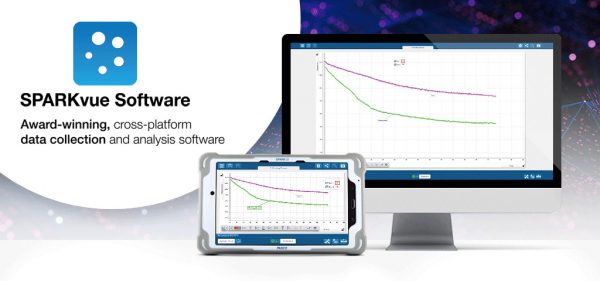
SPARKvue makes data collection, analysis, and sharing quick and easy on every platform. Compatible with all of PASCO’s wireless and PASPORT sensors, students can quickly set up their lab, or use a built-in Quick Start Lab and begin collecting data immediately. SPARKvue is for all sciences and grade levels. However, if you’re an advanced user looking for more capabilities such as video analysis, advanced statistics and calculations, and greater customization of data displays on a PC or Mac®, then check out our PASCO Capstone™ software.
Since SPARKvue was first released, it has been winning awards, and we never stop improving it. With the latest major release of SPARKvue 4, we’ve continued to add features without adding complexity. A new Welcome Screen makes it easy to get started and discover SPARKvue’s capabilities. Whether you want to add data manually, use sensors for real-time or remote logging, or open one of the hundreds of existing labs, this is your starting place.
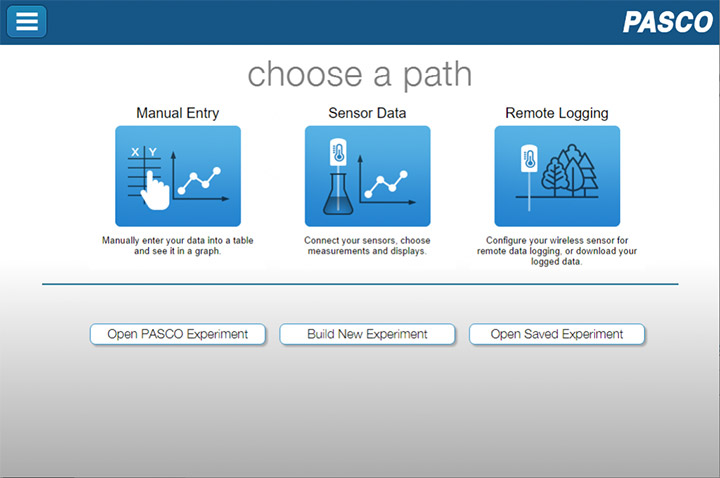
Using a USB or an interface, with SPARKvue you can just plug-and-play with nearly one-hundred sensors via Bluetooth®, which pairs wireless sensors through a simple in-app list (no system settings are required). PASCO understands that classrooms and labs can be hectic, so SPARKvue allows you to simply select a sensor from the sorted list (the closest sensors are first) and match a 6-digit laser-etched ID number to get connected. This method works even when there are dozens of Bluetooth sensors in the same lab.
Once you’ve selected a sensor, choose from a template or QuickStart Experiment, or you can build a page to meet your needs. SPARKvue is designed for inquiry, and students are not constrained to a few pre-selected layouts… the software can support expanding capabilities with ease.
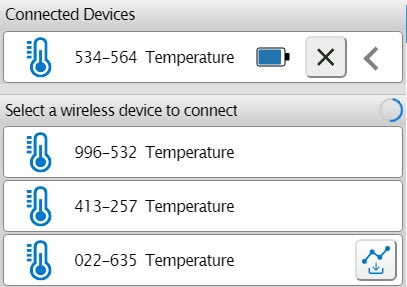
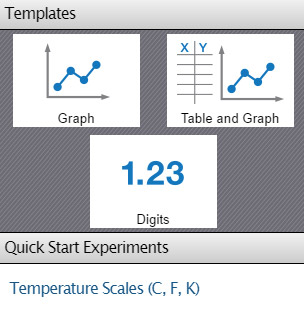
Collecting and visualizing data is easy with an array of displays, and the tools you need for analysis are right at your fingertips. Students can annotate data, apply curve fits, compare runs, create calculations, and much more! In-context tools make it simple to find what you’re looking for, which means that students spend their time learning the science, not the software.
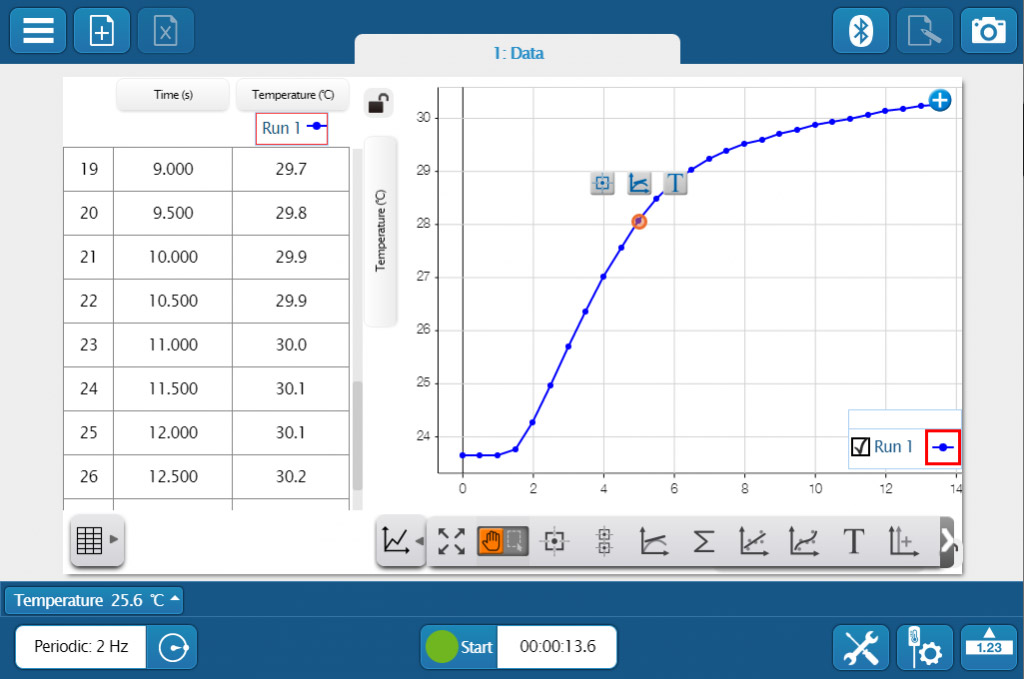 Whether you’re teaching K–8, high school, or college students, SPARKvue has the displays and tools you need to collect and analyze data. The basics you’d expect (such as digits, meter, graph, and table) are all included, but you will also find FFT, bar graphs, map display, embedded assessment questions, video playback, image capture, and analysis, as well as space for text and images. The labs you can build are only limited by your time and creativity.
Whether you’re teaching K–8, high school, or college students, SPARKvue has the displays and tools you need to collect and analyze data. The basics you’d expect (such as digits, meter, graph, and table) are all included, but you will also find FFT, bar graphs, map display, embedded assessment questions, video playback, image capture, and analysis, as well as space for text and images. The labs you can build are only limited by your time and creativity.
When it’s time for students to submit their work, SPARKvue supports a variety of formats, and its export tools make it easy for educators. Students can easily snapshot their work in SPARKvue and submit an image, export the data to a .csv file to work in a spreadsheet, or save it in our .spklab format when they can come back and do more work in the future. SPARKvue also supports many other apps for saving or sharing data, including Google Drive on Chromebooks™.
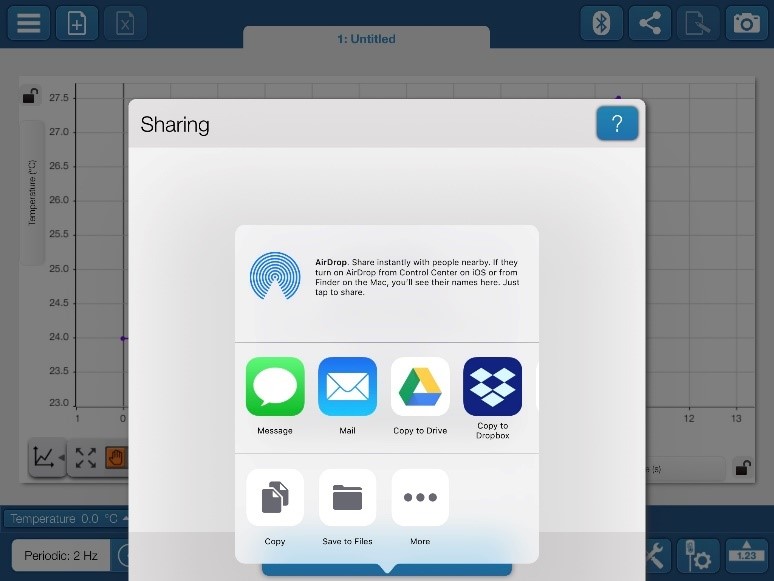 If students are collaborating on a lab activity across devices, they can set up a shared session and stream results in real-time. Then, when the session is over, each student will have a copy of the data to analyze independently. These sessions can be set up in seconds within a student group, or the entire class can share the data from a teacher demonstration.
If students are collaborating on a lab activity across devices, they can set up a shared session and stream results in real-time. Then, when the session is over, each student will have a copy of the data to analyze independently. These sessions can be set up in seconds within a student group, or the entire class can share the data from a teacher demonstration.
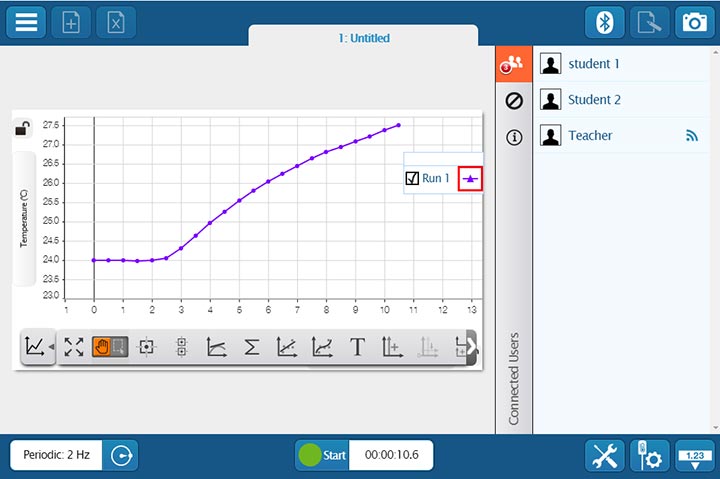
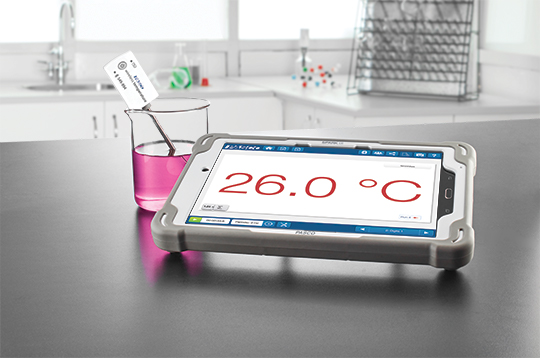
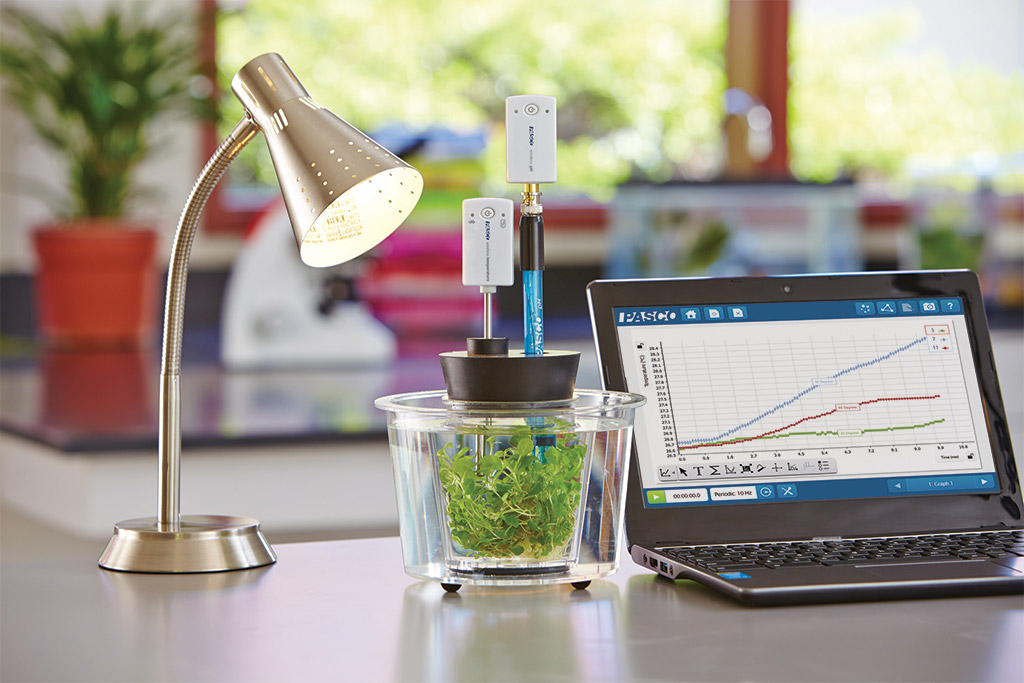
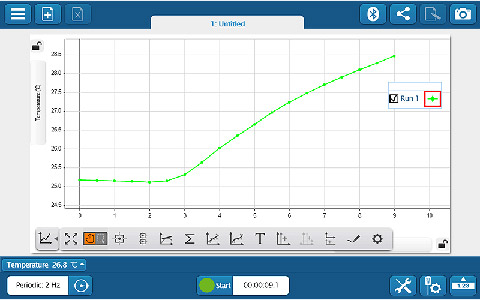
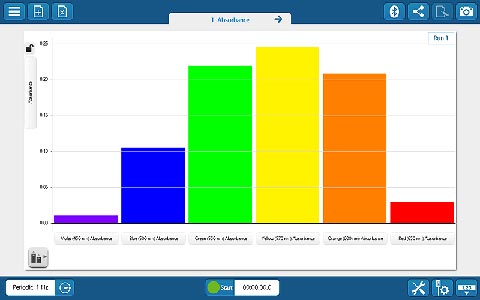
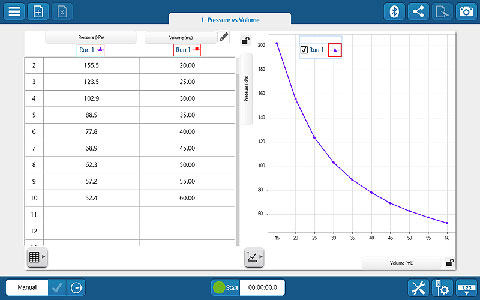
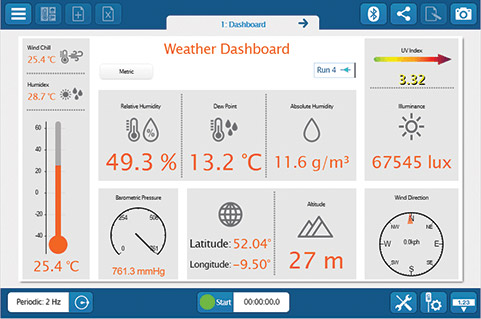
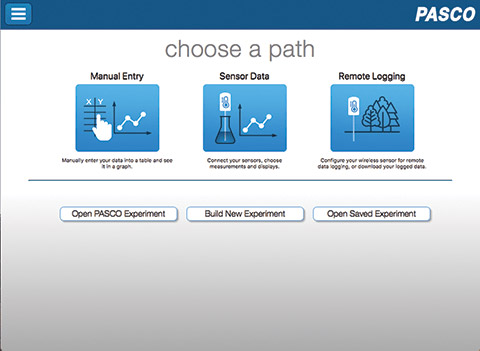
These SPARKvue apps provide the complete software install so that the user experience is the same regardless of platform. Updates for these apps are handled via direct notification and installation on your device, including SPARK LX/LXi users.
Let me paint you a picture. Not something physicists normally do but I’ll give it a shot.
I teach in a small town in BC. For most of my career it has been lower on the social-economic scale, a true blue-collar place but things are changing. More and more people are being pushed out of the big cities due to high house prices and ending up here where life is more laid back, more affordable, more idyllic?
Again, for most of my career the supplies I have had access to are the same supplies that came with the school when it was built…back in the 1950s. Trying to modernize my lab has been a challenge but just like the city, things are changing.
I’ve used PASCO products since my university days and have always found them to be intuitive and practical. When I had the chance, I purchased some of their GLX data loggers for demo purposes. I started to show the students the power of probeware and they yearned for more. Yes, I used yearn to describe students. I know, almost unheard of.
When I procured the funding to buy a class set of the GLXs after buying one a year for 5 years I was ecstatic. I called PASCO to order and was told that they were discontinued. I was bummed. What now? They told me about their new product, the Spark LX as a tablet data logger. I was intrigued. Many discussions happened, and I started to get on board. PASCO even took some of my suggestions about what I thought the logger should entail. After months of waiting they finally arrived; just in time for the start of a new school year.
I happily got to setting them all up and preparing their first interactions with the devices. I would use the Match-Graph software to give my physics students some hands-on real life to graph interactions. After a few hiccups of the airlinks needing firmware updates which my school computer wouldn’t allow I had the students head out into the school to test out the Spark and the software.
The looks we got from the other students and staff started as bewilderment. “What is his class up to now?” was heard more than once. My students didn’t even hear. They were too engaged to notice. The beginner graphs which were too hard mere seconds ago were now too easy. Harder graphs please. Harder and harder they went and the more competitive they got. “I’m addicted to this!” one student exclaimed. “I get it now.” Yelled another. They were hooked at first use.
I can’t wait to see how the next experiment goes. This is how technology should work in class. Relating physical experience to life experience to learning.
|
|
|

Who am I?
Hello World! My name is Maayan, and I am another co-op student at AYVA. I’m currently studying biochemistry at the University of Guelph, which is how I ended up on the AYVA Team. A bit more about me: I do not have any cute pets, but I do have two younger brothers. I’m interested in science, especially all the cool discoveries that can be made to improve the human condition. Outer space is rad. I can talk about Mars colonies for hours on end.
How did I get into science?
 As a wonderfully sweet little child, I frequently stole my brothers’ toys. I built Lego castles, controlled toy cars, and appropriated (stole) puzzles by the box. I liked building things, and I liked breaking things down to see how they worked. As I continued to grow into an adolescent, I enjoyed reading science fiction, enough to finish all the books my school library had.
As a wonderfully sweet little child, I frequently stole my brothers’ toys. I built Lego castles, controlled toy cars, and appropriated (stole) puzzles by the box. I liked building things, and I liked breaking things down to see how they worked. As I continued to grow into an adolescent, I enjoyed reading science fiction, enough to finish all the books my school library had.
Eventually, as I skipped on through life, I was assigned to do a school project on an important Canadian. I chose Julie Payette, an astronaut (and currently the Governor-General), and my interest was born. It was amazing to me that people had gone to the moon, and now different countries were collaborating on the International Space Station for scientific research. For the first time, I felt that people could come together for a cause to further humanity. The five-dollar bill is still my favorite: it has the Canadarm2 and the astronaut on it. To this day, I smile whenever I see one.
In high school I realized that astronauts couldn’t have gotten to space without a team of people down on earth who helped solve problems, and just because their jobs were less flashy (and got less camera time) it did not mean that they were any less important. Anyway, I liked biology (humans!) and enjoyed learning chemistry (and about the universe). I couldn’t decide which one I liked better, so biochemistry is the major I chose. No one seemed to be offering xenobiology or astrobiology courses at the time, but I hope someday they will.
What’s Next?
Back to the blog, I will be writing a few articles on teaching science through inquiry. This is important for future STEM-ists since teaching STEM is only a step before understanding STEM. After all, every inventor, scientist, engineer, mathematician, technologist, and astronaut started as a student.
Nice to meet you, and I hope to write again soon,
Maayan
Every 4 years, GLOBE hosts their annual conference outside the USA and this year we trekked to Killarney, Ireland to work with GLOBE coordinators, teachers, and students from all over the world. The conference began with an opening ceremony at the Killarney House which offered an incredibly scenic exhibit venue.

For the next several day’s attendees used PASCO equipment at two field sites to collect water quality data on the Owengarrif River. Sampling took place at the Upper Torc above the falls and the Lower Torc at the mouth of the river.

Having downloaded SPARKvue software to their phone or tablet the students and teachers connected to the Optical Dissolved Oxygen, Wireless pH, and Wireless Conductivity sensors to complete the Water Quality Protocol. We also deployed the new Wireless Weather Sensor which made the site set up a cinch, answering the two critical questions of “Where are we?” and “What are the current conditions?” right on the weather dashboard display.
While the map display is not required for this protocol being able to view the data in real-time on the map was helpful to give students a sense of the landscape and identify features that could impact the water quality. Happily, at every site, we sampled the Owengarrif was in good health, although it was running near-record low flow rates due to a 5wk drought and above-average temperatures.
Here’s a quick video of highlights during the conference – hopefully, we’ll see you there next year!
If you’re already a GLOBE teacher or PASCO user and want to see what protocols are supported with sensors, please visit our GLOBE page for an updated alignment. If you’d like to learn more about how to participate in the GLOBE program and get your students collecting data that will be used by scientists all over the world, please visit GLOBE.gov to get started.
I have taught grade 9 applied science, science and technology, grade 10 applied, regular and enriched science, grade 11 chemistry and physics for 33 years at Westwood Senior High School in Hudson Québec. I discovered the PASCO equipment in 2019 and it completely changed my life. I love to discover, produce experiments and share discoveries. I am looking forward to work with your team.
Having graduated with a major in Computer Science and minors in Physics and Mathematics, I began my teaching career at Killarney Collegiate Institute in Killarney, Manitoba in 2009. While teaching Physics there, I decided to invest in PASCO products and approached the Killarney Foundation with a proposal about funding the Physics lab with the SPARK Science Learning System and sensors. While there I also started a tremendously successful new course that gave students the ability to explore their interests in science and consisted of students completing one project a month, two of which were to be hands-on experiments, two of which were to be research based, and the final being up to the student.
In 2011 I moved back to Brandon, Manitoba and started working at the school I had graduated from, Crocus Plains Regional Secondary School. In 2018 I finally had the opportunity to once again teach Physics and have been working hard to build the program. Being in the vocational school for the region has led to many opportunities to collaborate with our Electronics, Design Drafting, Welding, and Photography departments on highly engaging inter-disciplinary projects. I believe very strongly in showing students what Physics can look like and build lots of demonstrations and experiments for my classes to use, including a Reuben’s tube, an electromagnetic ring launcher, and Schlieren optics setup, just to name a few that have become fan favourites among the students in our building. At the end of my first year teaching Physics at Crocus Plains I applied for CERN’s International High School Teacher Programme and became the first Canadian selected through direct entry in the 21 years of the program. This incredible opportunity gave me the opportunity to learn from scientists working on the Large Hadron Collider and from CERN’s educational outreach team at the S’Cool Lab. Following this, I returned to Canada and began working with the Perimeter Institute, becoming part of their Teacher Network.
These experiences and being part of professional development workshops with the AAPT and the Canadian Light Source (CLS) this summer has given me the opportunity to speak to many Physics educators around the world to gain new insights into how my classroom evolves. As I work to build our program, I am exploring new ideas that see students take an active role in their learning, more inter-disciplinary work with departments in our school, the development of a STEM For Girls program in our building, and organizing participation in challenges from the ESA, the Students on the Beamline program from CLS, and our local science fair.
Though I graduated with a BEd qualified to teach English and Social Studies, it just wasn’t meant to be. My first job was teaching technology courses at a local high school, a far cry from the English and Social Studies job I had envisioned myself in. I was lucky enough to stay in that position for over ten years, teaching various technology courses in grades 10-12, while also obtaining a Master of Education in Technology Integration and a Master of Education in Online Instructional Media.
You will notice what is absent from my bio is any background in science. In fact, I took the minimum amount of required science courses to graduate high school. Three years ago I switched roles and currently work as a Technology Integration Leader; supporting teachers with integrating technology into their pedagogy in connection with the provincial outcomes. All of our schools have PASCO sensors at some level (mostly grades 4-12) and I made it my professional goal to not only learn how to use them, but to find ways to make them more approachable for teachers with no formal science background (like me!). Having no background or training in science has allowed me to experience a renewed love of Science, making it easier for me to support teachers in learning how to use PASCO sensors in their classrooms. I wholeheartedly believe that if more teachers could see just how easy they are to use, the more they will use them in the classroom and I’ve made it my goal to do exactly that.
I enjoy coming up with out-of-the-box ways of using the sensors, including finding curriculum connections within subjects outside of the typical science realm. I have found that hands on activities with immediate feedback, which PASCO sensors provide, help students and teachers see the benefits of technology in the classroom and will help more students foster a love of science and STEAM learning.